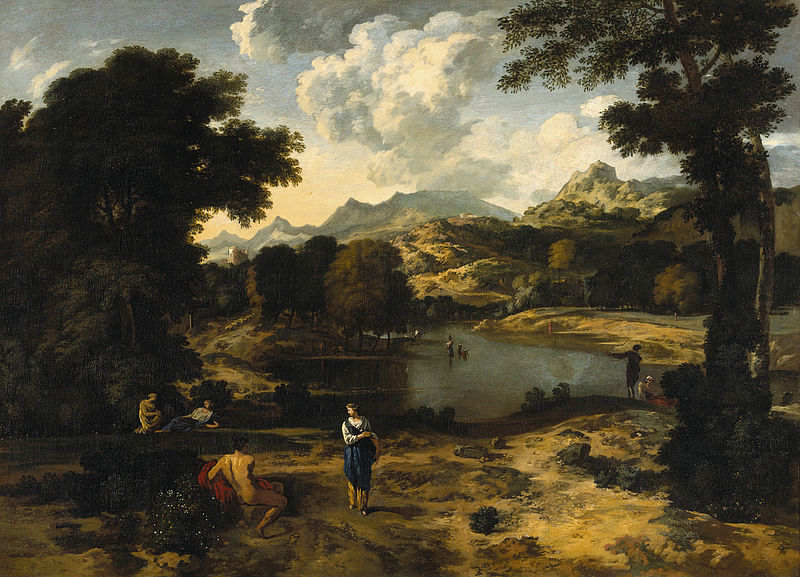Heroic Landscape with Figures
Framesize 139.00 x 181.00 x 14.00 cm
Most of Dughet’s landscapes have their inspiration in antiquity, and represent idyllic images of day-dreams transcending reality. The people in these paintings are mere staffage, as is demonstrated by the largescale painting in the Residenzgalerie Salzburg. The carefully-designed composition resembles the image of a dream, without the remotest topographical reference to the Roman countryside. This fantasy world harks back to the work of Roman poet Virgil (70–19 BC), who recreated the lost paradise in his poetic dreamland of Arcadia, where people lived in peace and harmony with nature. Dughet clearly differs from his teacher Nicolas Poussin in assigning a subordinate role to the staffage figures.
In Rome, Dughet’s outstanding reputation as a landscape painter was rivalled in his lifetime only by that of the Frenchman Claude Lorrain (1600–1682) and the Italian Salvatore Rosa (1615–1673). While Lorrain established his reputation mainly with his light-filled harbour scenes, it was Rosa’s battle scenes and atmospheric landscapes – some with soldiers – that appealed to those who commissioned works from him.
Dughet seems to have been a passionate hunter; according to Filippo Baldinucci, he owned a house in Tivoli, which allowed him to paint vedute outdoors. An exception among 17th century French baroque painters, the artist never saw France, yet he was familiar with French art, since Rome had an extensive French artists’ colony. Dughet’s influence on 18th century English landscape painting was considerable.
HABERSATTER Thomas: Dughet Gaspard, Heroic landscape with figures, in: DUCKE Astrid, HABERSATTER Thomas, OEHRING Erika: Masterworks. Residenzgalerie Salzburg. Salzburg 2015, p. 122


